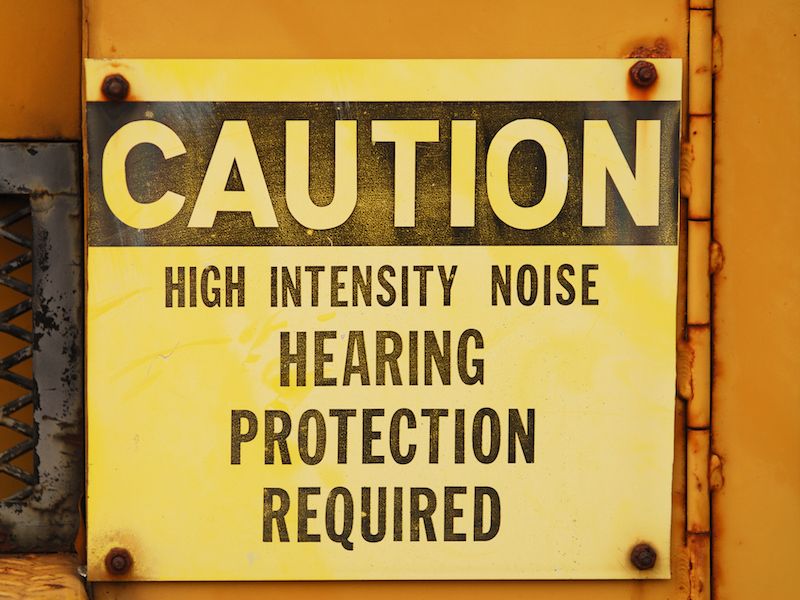It’s one thing to recognize that you need to protect your hearing. Recognizing when to safeguard your ears is another matter. It’s more difficult than, let’s say, knowing when you need sunblock. (Are you going outside? Is there sunlight? You should be using sunblock.) Even knowing when you need eye protection is easier (Working with hazardous chemicals? Doing some construction? You need eye protection).
It can feel like there’s a significant grey area when dealing with when to wear hearing protection, and that can be dangerous. Unless we have particular information that some place or activity is hazardous we tend to take the easy road which is to avoid the problem altogether.
A Tale of Risk Analysis
In general, we’re not very good at assessing risk, especially when it comes to something as intangible as lasting hearing damage or hearing loss. To demonstrate the situation, check out some examples:
- Person A goes to a very loud rock concert. 3 hours is around how long the concert lasts.
- A landscaping company is run by person B. After mowing lawns all day, she goes home to quietly read a book.
- Person C is an office worker.
You might think the hearing hazard is greater for person A (let’s just call her Ann). For most of the next day, her ears will still be ringing from the loud show. Assuming Ann’s activity was dangerous to her ears would be reasonable.
The noise that person B (let’s just call her Betty), is subjected to is not as loud. There’s no ringing in her ears. So her hearing must be safer, right? Not necessarily. Because Betty is mowing every day. So despite the fact that her ears never ring out with pain, the harm builds up gradually. Even moderate noise, if experienced with enough frequency, can harm your hearing.
Person C (let’s call her Chris) is even less obvious. Lawnmowers have instructions that emphasize the hazards of ongoing exposure to noise. But even though Chris works in a quiet office, she has a very noisy, hour-long commute every day on the train. Also, while she works behind her desk all day, she listens to her music through earbuds. Is protection something she should consider?
When is it Time to Start to Consider About Safeguarding Your Hearing?
In general, you should turn down the volume if you have to raise your voice to be heard. And if your environment is that loud, you should think about using earplugs or earmuffs.
If you want to think about this a little more scientifically, you should use 85dB as your limit. Sounds above 85dB have the ability, over time, to result in damage, so in those situation, you need to think about wearing ear protection.
Most hearing professionals recommend making use of a special app to monitor noise levels so you will be aware when the 85dB has been reached. These apps can let you know when the ambient sound is nearing a harmful level, and you can take suitable steps.
A Few Examples
Even if you do download that app and take it with you, your phone may not be with you everywhere you go. So we might formulate a good standard with a few examples of when to safeguard our hearing. Here we go:
- Working With Power Tools: You know you will require hearing protection if you work every day in a factory. But how about the enthusiast building in his workshop? Most hearing specialists will recommend you wear hearing protection when operating power tools, even if it’s just on a hobbyist basis.
- Commuting and Driving: Spending all day as an Uber or Lyft driver? Or maybe you’re just waiting downtown for work or boarding the train. The noise of living in a city is bad enough for your ears, not to mention the extra damage caused by cranking up your music to drown out the city noise.
- Household Chores: Even mowing the lawn, as previously mentioned, necessitates hearing protection. Cutting the grass is a great illustration of the sort of household chore that could cause harm to your ears but that you probably don’t think about all that often.
- Exercise: You know your morning spin class? Or maybe your nighttime yoga session? Each of these examples could call for ear protection. Those trainers who use sound systems and microphones (and loud music) to motivate you might be good for your heart rate, but all that loudness is bad for your ears.
- Listening to music with earbuds. OK, this doesn’t require protection but does require care. Pay attention to how loud the music is, how long you’re listening to it, and whether it’s playing directly into your ears. Think about getting headphones that cancel out outside sound so you don’t need to crank up the sound to dangerous levels.
These illustrations may give you a suitable baseline. When in doubt, though, you should defer to protection. In the majority of cases, it’s better to over-protect your ears than to leave them subject to possible damage in the future. Protect today, hear tomorrow.
[blogcta]

